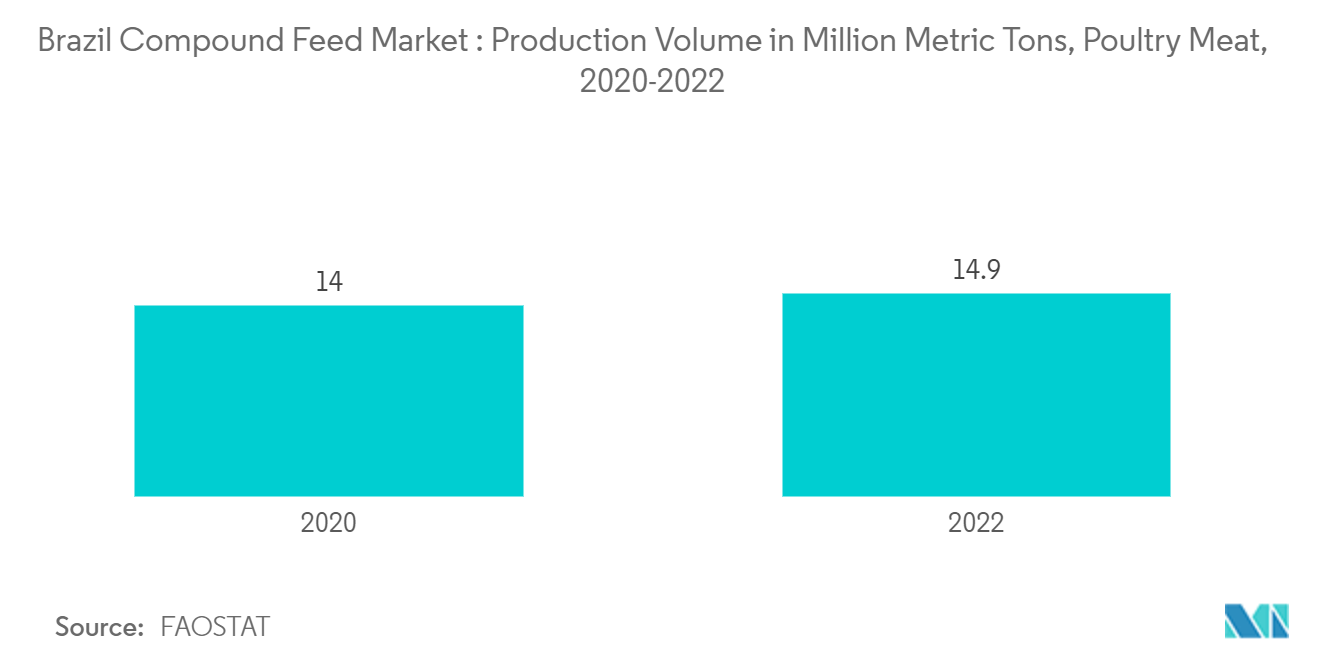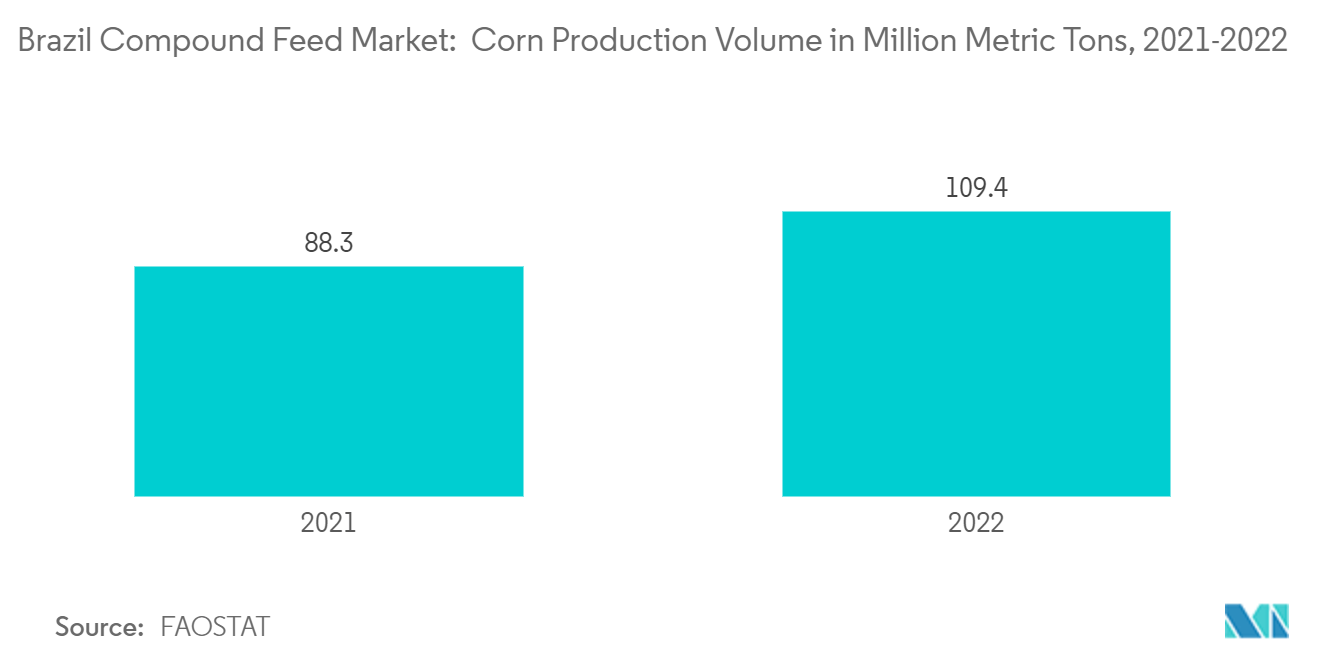Market Trends of Brazil Compound Feed Industry
Surge in Meat Demand Fuels Growth of Brazil's Poultry Sector
The growing demand for meat is the major driving force behind the growth of the compound feed market in Brazil. Increased awareness regarding quality meat and milk products and industrialization in the livestock industry are two other factors augmenting the growth of the compound feed during the forecast period. In South America, Brazil dominates the market as it is one of the leading meat poultry producers across the world and the country is one of the leading exporters of poultry. Besides, Brazil is renowned for its healthy and quality poultry and its efficiency in chicken production. This has made the country one of the world’s largest poultry exporters and third largest producer of poultry meat. For instance, according to FAOSTAT, Brazil produced 14.0 million metric tons of poultry meat in 2020, which increased by 14.9 million metric tons in 2022.
Besides, the Brazilian Central Bank (BCB) projects a moderate economic outlook for 2023 with a GDP growth of 2.56 percent and an inflation rate of 4.92 percent. Social aid programs targeting the most vulnerable segments of the population and a rise in the minimum wage are poised to bolster domestic meat consumption. These economic enhancements have notably uplifted the purchasing power of many Brazilians, leading to a surge in chicken meat consumption. Chicken, being the predominant animal protein in Brazil, often serves as a more affordable substitute for the traditionally favored, yet pricier, beef. According to OECD-FAO data, Brazil's poultry meat consumption rose from 10,522.2 thousand metric tons in 2020 to 10,899.8 thousand metric tons in 2022. Given this trajectory in poultry meat consumption and the emphasis on dietary needs, the region's compound feed production is set to rise.

Cereal is the Significant Segment by Ingredient
Cereals are the primary ingredients in animal feed, mainly as a carbohydrate-energy source. It accounts for a large percentage of poultry feed. Maize is the most used cereal in Brazil, followed by Sorghum, and is used primarily for swine, poultry, and cattle (both beef and dairy cattle). However, the use of cereal depends on the price of the cereal, as demand from the feed sector is price-responsive. Thus, the price of each cereal, relative to others, plays a major role in determining the usage levels in the animal feed sector. Apart from prices, factors such as digestibility and fiber content are also of significance. Maize, wheat, and sorghum are the most used cereals as they are rich in highly digestible carbohydrates, relatively low in fiber (important for pigs and poultry), and contain a modest amount of protein.
Brazil stands as a leading producer and exporter of poultry meat and eggs. As domestic consumption of these products rises, so does the country's poultry production. Corn, a key ingredient in compound feed, plays a pivotal role in boosting egg production. This surge in egg production has, in turn, heightened the demand for corn as a feed ingredient, leading to an increase in the country's corn production. For instance, data from FAOSTAT, corn production jumped from 88.3 million metric tons in 2021 to 109.4 million metric tons in 2022.


